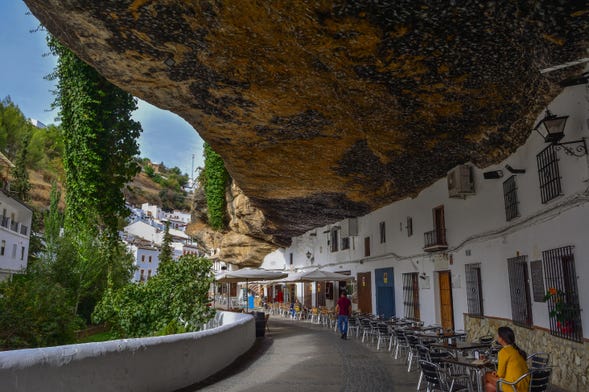Setenil de las Bodegas, located in the province of Cádiz, Spain, is a captivating town known for its extraordinary architecture and rich historical significance. Nestled along the River Trejo, this unique settlement offers visitors a glimpse into a history that spans thousands of years, showcasing the remarkable interplay between natural landscapes and human ingenuity.
Historical Context
Prehistoric Inhabitance
Evidence suggests that the area surrounding Setenil has been inhabited for over 20,000 years. Archaeological findings indicate that prehistoric humans sought refuge in the natural caves formed by the erosion of the river, utilizing the natural shelter provided by the cliffs. This deep-rooted connection to the land lays the foundation for the town’s enduring legacy.

Roman Influence
In the 1st century CE, the Romans invaded the region, recognizing the strategic importance of the gorge along the River Trejo. The Romans integrated Setenil into their empire, and archaeological evidence indicates that they constructed roads and settlements in the area. This influence left a lasting impact on the architecture and infrastructure of Setenil.
Moorish Fortification
The most significant transformation of Setenil occurred in the 12th century when it was developed from a Moorish fortification. This fortification provided a defensive vantage point along the river, playing a crucial role during the Reconquista, when Christian kingdoms sought to reclaim the Iberian Peninsula from Muslim rule. The remnants of this fortification can still be seen in the town today, symbolizing its historical significance.
Unique Architecture
Setenil de las Bodegas is renowned for its distinctive dwellings built into massive rock overhangs. This architectural style sets it apart from other towns and offers several benefits:
Natural Protection
The town’s homes are constructed into the cliffs, providing natural protection from harsh weather conditions. The rock formations serve as an insulating barrier, making the homes cooler in the summer and warmer in the winter. This practical design reflects the ingenuity of the town’s inhabitants over the centuries.

Historical Significance
The architecture of Setenil de las Bodegas showcases a blend of cultural influences, including Moorish, Roman, and local styles. The integration of the natural landscape into the built environment highlights the adaptability and resourcefulness of its residents throughout history.
Cultural Heritage
In addition to its architectural marvels, Setenil is famous for its wine production, particularly in the surrounding countryside, which is dotted with vineyards. The region celebrates its winemaking tradition with local festivals, emphasizing the importance of viticulture in the economy and culture of Setenil. This agricultural heritage adds another layer to the town’s historical narrative.

Conclusion
Setenil de las Bodegas stands as a testament to the rich history and architectural innovation of the region. Its unique homes, historical significance, and cultural heritage make it a fascinating destination for visitors interested in exploring the intricate tapestry of Spanish history. As the town continues to evolve, it remains a vibrant example of how communities can harmoniously coexist with their natural surroundings while preserving their historical identity.

